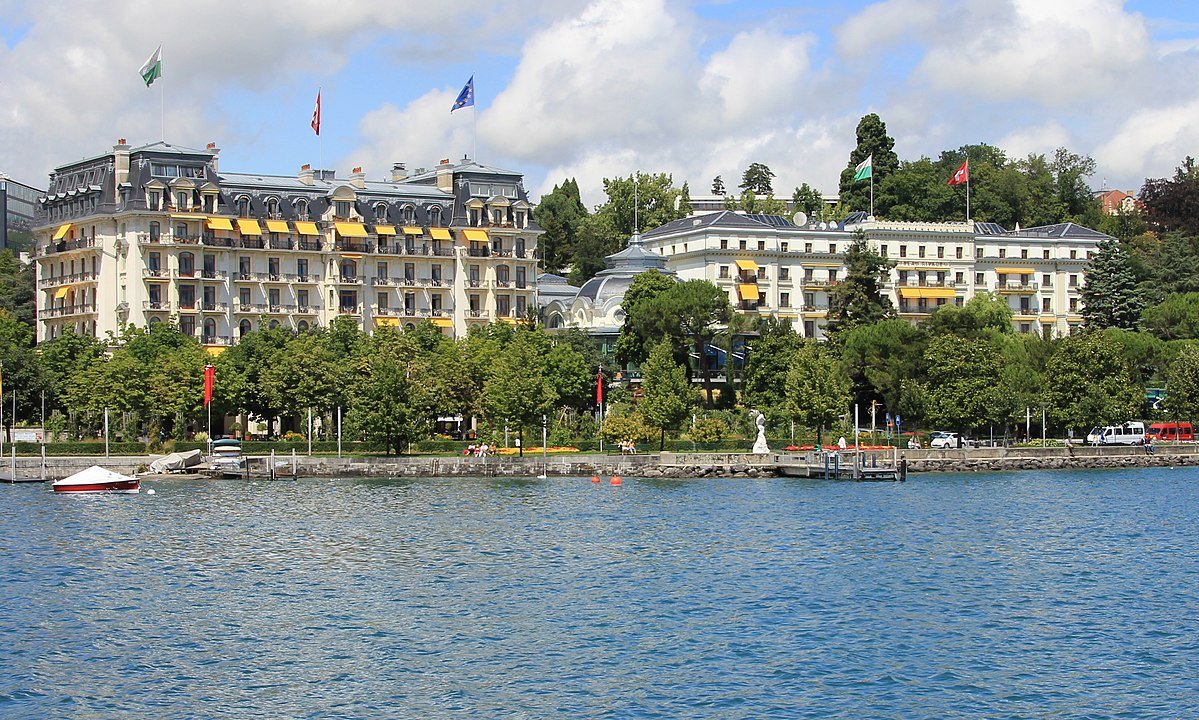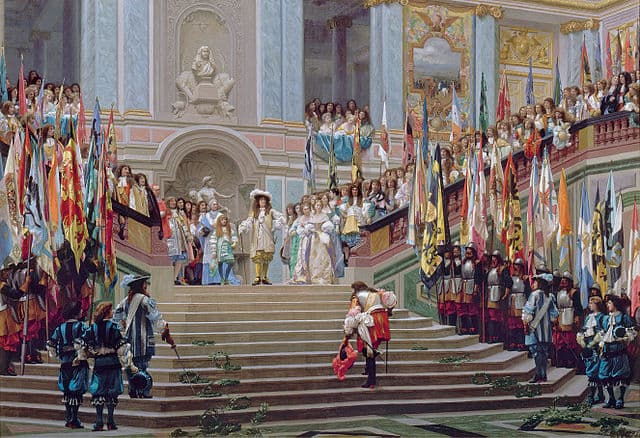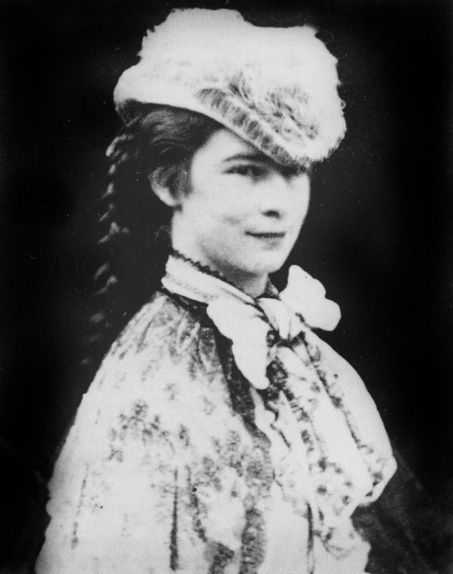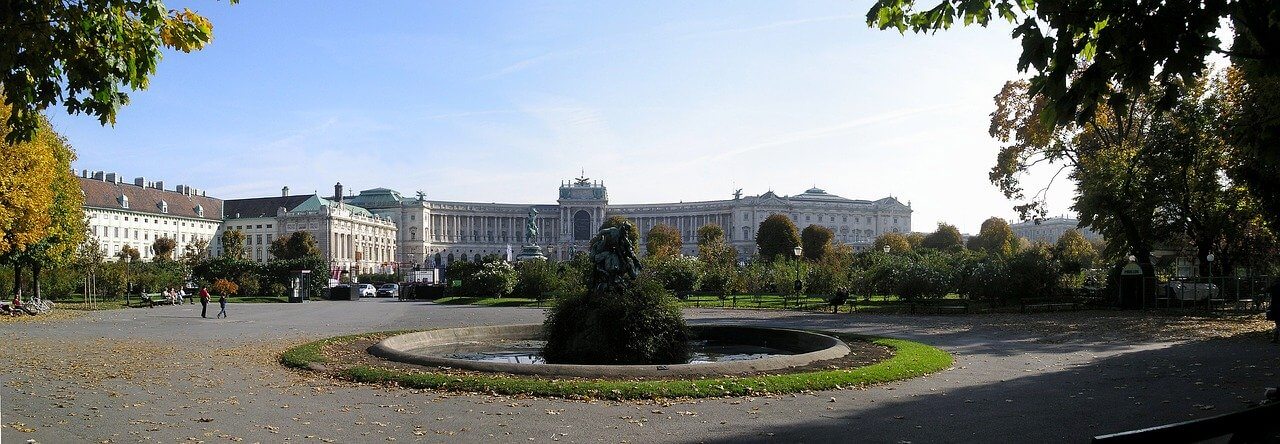Irma Sztáray
Lady-in-Waiting of Empress Elisabeth of Austria
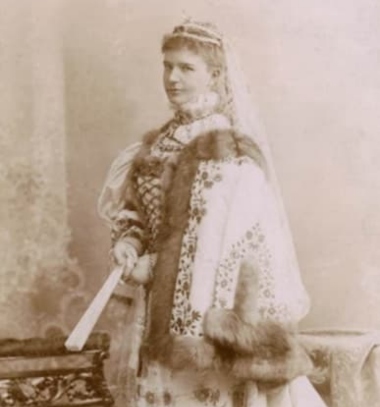 Irma Sztaray, Lady-in-Waiting of Empress Elisabeth of Austria
Irma Sztaray, Lady-in-Waiting of Empress Elisabeth of AustriaIrma Sztáray is best known for being an eyewitness to the assassination of Empress Elizabeth of Austria - in Geneva on September 10, 1898.
She had been the main lady-in-waiting to the Empress for the previous years and devoted her life to her. Irma was the sole lady-in-waiting capable of keeping pace with Elizabeth on the exhausting trips over hills and valleys that the Empress undertook.
I have gathered some more information, but can not find not much. The years she spent alongside the empress are the best documented. Even when recounting her own experiences, she dedicates her memoirs solely to these four years. It must have made an impact, considering her long life spanning 77 years.
DISCLOSURE: I get commissions for purchases made through some of the links in this article.
Upbringing at Sztáray Mansion, Hungary
You can visit The Sztáray Mansion, as it nowadays houses the Zemplín Museum, where you can see the cultural-historical development of the Zemplín region.
A historical exhibition showcasing the lifestyle of the nobility and affluent bourgeoisie in the Zemplín region is on display. The exhibit features a fascinating collection of historical furniture, musical instruments, and antique printed volumes, providing visitors with a glimpse into the opulent past of the region's elite. You can see portraits of members of the Sztáray family as well.
Countess Irma Sztaray de Sztára et Nagymihály, born on 10 July 1863, came from the Hungarian aristocratic family of Sztárays. Her father was Count Viktor, and her mother, Countess Mária Török of Szendrő. Unfortunately, Irma lost her father at the tender age of 15.
The Sztáray Mansion, where Irma spent her childhood, is currently located in the Bratislava Region of Slovakia. When Irma was born, this region was part of Hungary.
Irma had 6 siblings: Eugen (1855 – 1904), Štefan (1858 – 1896), Šarlota (1859 Staré – 1941), Alexander (1862 – 1948), Etelka ( 1865 – 1866) en Elizabeth (1873 – ?).
As was customary for young women of her social standing, Irma would have received a private education, including lessons in etiquette, languages, music, and other refined arts.
It's unclear why Irma Sztáray did not get married. One possibility is that she simply never found the right man. Another option is that she was not interested in marriage at all. She may have been content with her life as a single woman, and was reluctant to give up her freedom.
Irma;s brother Stefan was shot dead in his castle in Staré by an unknown assailant on July 12, 1896. He was a member of the Hungarian Parliament, but his murder remains a mystery to this day. Irma was in the service of Elisabeth during this time, She was granted a few months of leave to be with her grief-stricken mother.
Sisi & I (German: Sisi & Ich) is a new 2023 film about Empress Elisabeth of Austria, showing a very different side to the "Sisi" we are familiar with from the 1955 Sissi trilogy.
The story is told from the perspective of her lady-in-waiting, Irma Sztáray, who began serving the empress in her later years. While "Sisi & I" takes creative liberties and deviates from historical accuracy, it offers an interesting insight into the empress's character and lifestyle during the last years of her life. We witness a side of Empress Elisabeth that goes beyond the romanticized and sugar-coated image of Sissi that we are accustomed to.
The film offers an interesting view into the multifaceted and profound personality of Empress Elisabeth, going beyond the typical depictions of her as a fairy-tale princess.
The film is written and directed by Frauke Finsterwalder and co-written by Christian Kracht, starring Susanne Wolff as Empress Elisabeth of Austria and Sandra Hüller as Countess Irma Sztáray.
Lady-in-Waiting
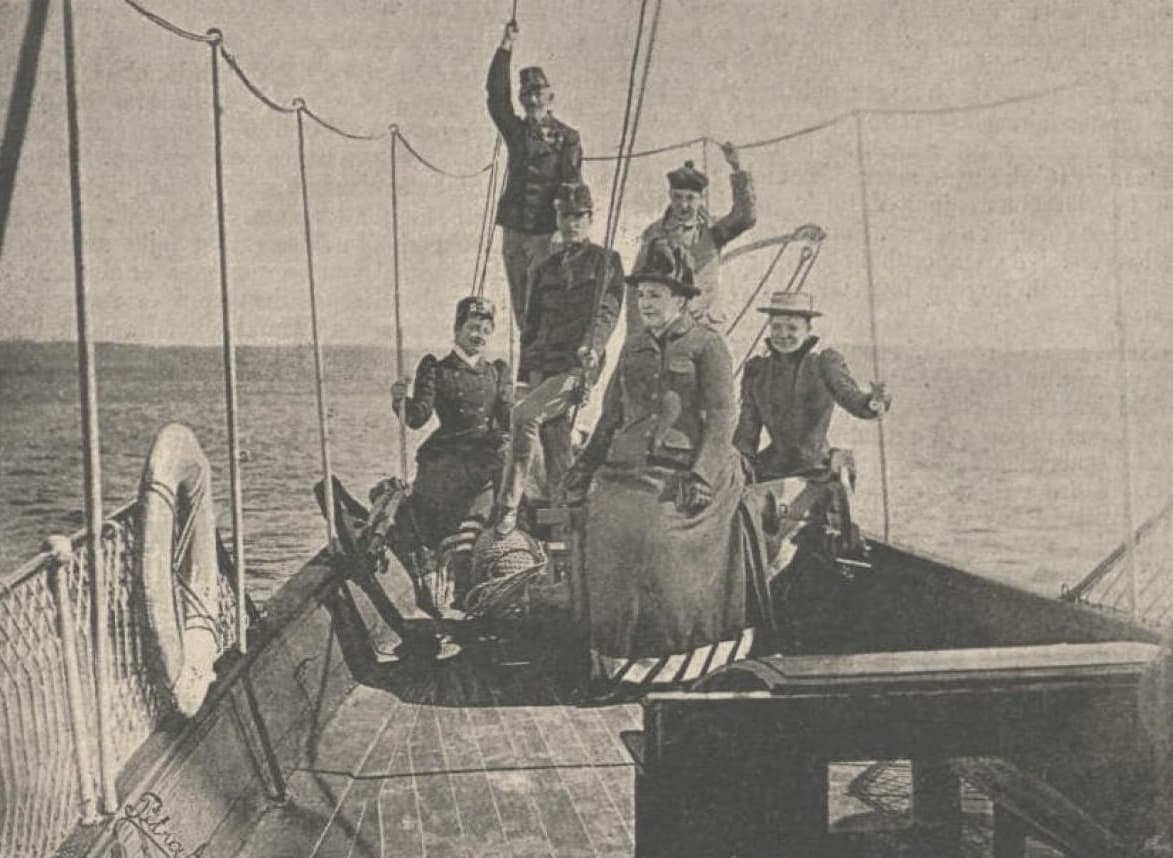 In this image, you see the von Sachsen-Coburg family. In the middle is Archduchess Clotild To Clotild's left sits her lady-in-waiting, Countess Sztáray.
In this image, you see the von Sachsen-Coburg family. In the middle is Archduchess Clotild To Clotild's left sits her lady-in-waiting, Countess Sztáray.Before becoming the lady-in-waiting to Empress Elisabeth, Irma served as a lady-in-waiting to Archduchess Clotilde von Sachsen-Coburg, the wife of Archduke Joseph Karl of Austria.
This family resided in the elegant Archduke Joseph's Palace in Budapest, Hungary. It was during this time that Irma gained experience and honed her skills as a courtly attendant.
Empress Elisabeth had a strong interest in Hungarian culture and traditions, and she spent a significant amount of time in Hungary throughout her life. It is possible that this led to her meeting Irma Sztáray or other members of the Hungarian aristocracy who may have recommended her.
At the age of 30 Irma entered the service of Elizabeth. From 1894 to 1898 she accompanied Sisi all over Europe.
A Close Bond with Empress Elisabeth
Irma met Empress Elisabeth in Ischl in 1894. Irma and the empress embarked on journeys to several locations, including Corfu, the French Riviera, Algeria, and Egypt. They often sought out medical treatments and relaxation at spas in the Netherlands, Germany, and Switzerland.
Empress Elisabeth's interest in Hungarian culture further strengthened the connection with the Hungarian Irma, leading to their close friendship. They spend a great deal of their time there. Like Sisi, Irma was a was also a skilled horsewoman, and she often accompanied Elisabeth on her riding expeditions.
In Irma's memoirs of her time with Elisabeth, titled Memoiren der letzten Hofdame der Kaiserin Elisabeth (Memoirs of the Last Lady-in-Waiting of Empress Elisabeth) we can read about these travels, and get a sense of the life they lived during these years.
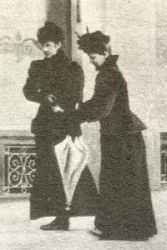
There are some nice anekdotes in the book. The Empress had no problem stepping into a second-class compartment if the first-class was full or having a steak at a simple inn. In Munich, a visit to the "Hofbräuhaus" for a large pint of beer was a regular occurrence. Irma also had to experience it and rinse her own beer mug, as was customary. They both had a pint of beer ( 1liter!)
The Empress enjoyed mingling with the "common" people as long as she could remain anonymous. However, if she was recognized, she wanted to disappear as quickly as possible.
The invention of the steam engine and the rapid expansion of the rail network in Europe in the second half of the 19th century made travel easier and an expression of a completely new attitude to life.
The empress had her own very exquisitely equipped train carriage that could easily be coupled to other trains.
In 1868, Empress Elisabeth had also purchased the ship Miramar from Carlota.
The Miramar was a luxurious yacht, with a crew of over 100 people. It was equipped with a library, a music room, and a Turkish bath.
Elisabeth loved the Miramar and used it extensively for her travels throughout the Mediterranean.
In her book, Irma recounts their initial voyage on the "floating palace" which was cut short due to a storm lasting several days. They had to complete the journey by train. Even though Irma was scared, the empress still went for walks on the deck, hoping to encourage Irma to appreciate the beauty of nature and overcome her fears.
Aus den letzten Jahren der Kaiserin Elisabeth by Irma Sztáray was first published in 1929. The book offers a unique glimpse into the life of the empress in the last years before her death. Sztáray describes, among other things, the empress's love of beauty, her worries about her children, and her despair over the death of her son, Crown Prince Rudolf. The book is a valuable resource for anyone interested in the life of Empress Elisabeth.
The book is available for free on the website of archive.org (in German). You can also buy a hard copy on Amazon.
The last voyage
In the fall of 1898, the Empress travelled incognito throughout Switzerland with a party of 12 individuals. Besides Countess Irma Sztáray, others were General Berzeviczy, who acted as Marshal of the Court, Dr Eugen Kromar, who was the intendant, Frederik Barker, who served as a tutor, as well as two chamberlains and six servants.
During their stay at the Hotel de Caux in Lausanne, the empress and her party occupied fifteen rooms on the first floor. These rooms opened onto a spacious balcony. As usual, the empress occupied 3 of the rooms, the others were for her servants.
In the early hours of the morning, at around 5 o'clock, the Empress would wake up and go for a walk after taking a bath. Irma likely accompanied her. She drank a glass of goat's milk somewhere along the way, and some days that was all she ate.
Empress Elisabeth and Irma travelled across the Geneva lake to Pregny, to visit the Rothschilds' estate. They then travelled further to Geneva, to spend the night at the Hotel Beau Rivage.
Irma emphasizes that she complied (reluctantly) with the request of accompanying the incognito travelling queen alone to Geneva. General Berzeviczy had expressed his concerns, as Geneva was a hotbed of political activism at the time, and there was a real threat of violence against the empress. In the years leading up to her assassination, she had been the target of several threats and attacks.
Elisabeth did not listen to the warnings. She ordered her entourage to take the train back to Montreux in the morning, while she and Irma would be travelling by boat.
This is why, on September 10, 1898, they strolled together along the promenade to catch the ferry. An anarchist named Luigi Lucheni approached them and, while he acted as he stumbled, Lucheni stabbed Elisabeth with a sharpened file, striking a fatal blow to her heart.
In the face of this shocking and brutal attack, Irma Sztáray demonstrated extraordinary courage and quick thinking.
She was the only servant present during this fateful event, making her an eyewitness to the shocking incident.
You can read the details on the assassination of Empress Elisabeth here.
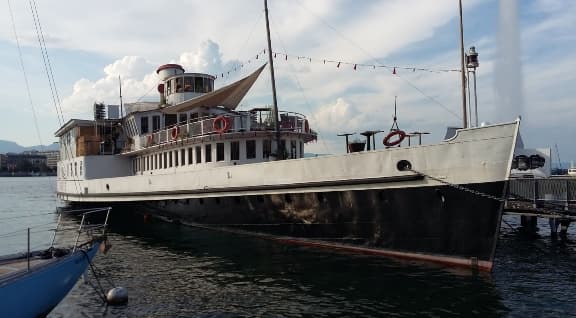 The steamship “Genève” on which Empress Elisabeth died is still afloat today
©palaces-of-europe.
The steamship “Genève” on which Empress Elisabeth died is still afloat today
©palaces-of-europe.In short, Sisi managed to get up and walk to the ship. On board, Elisabeth loses her conscience. They are still not aware that Luigi offered more than a blow. Only after Irma loosens the corset of the Empress, she discovers a small stain of blood. She quickly raises the alarm and has the captain turn around the boat that already started the trip. With the help of some bystanders, the empress is brought back to the hotel.
Back at the Beau Rivage Hotel, Irma is aware that the situation is very serious. She immediately sends a telegram to Count Paar at the Hofburg in Vienna, saying: "Her Majesty the Empress was badly wounded, please report this to His Majesty the Emperor with the deepest respect."
The Empress dies very soon after this message, so Irma needs to send another message to the Emperor: "Ihre majestät die Kaiserin is entschlummert".
The empress is dead, and Irma is devasted. She stays at the empress' side though, all the way to the Imperial Crypt beneath the Capuchin Church in Vienna, where Sisi was buried.
Life After the Tragedy
A year after the attack, Irma Sztáray embarked on a journey to Italy with her mother to find solace and peace after the mental turmoil of the previous year. In 1907, she made a significant contribution to the Queen Elizabeth Memorial Museum in Buda Castle, donating the black silk jacket worn by the Queen on the day of the assassination attempt, along with other poignant mementos.
After that, Countess Irma Sztáray chose to lead a reclusive life in her family's castle in Sobránc. She lived there until her passing in 1940, preserving the memories of her time with Empress Elisabeth and the role she played in the Empress's life.
